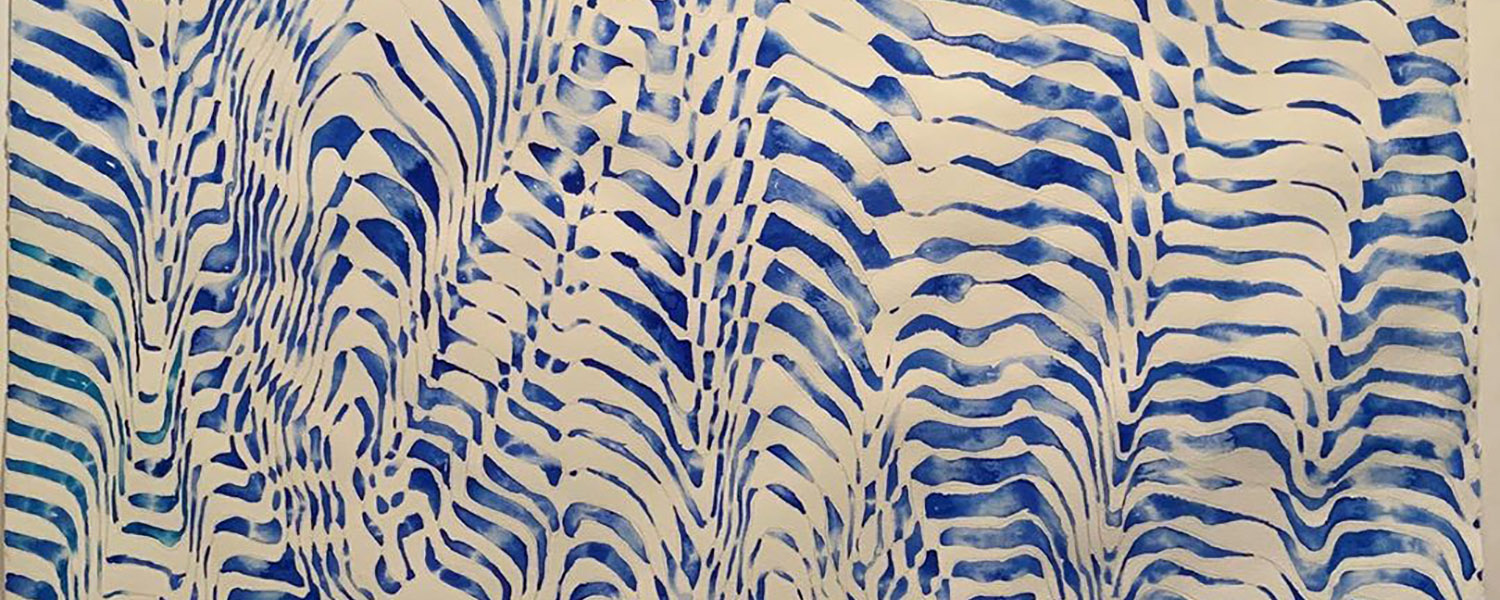"[Things that are] determined in general but depends on chance in details." — Werner Meyer-Eppler (1955)
"Process art is chance, contingency and indetermination" — Robert Morris
Having experienced a few different approaches to allowing chance into our drawings, we'll spend the rest of this section making our own set of rules with coins, dice, and other random inputs.
This is an algorithm!
We hear the word "algorithm" a lot but really it just means a set of instructions, like a recipe, and that's exactly what we're making here! It's not such a huge leap into writing code to make drawings as well, which affords us the power of speed and repetition to make images that would be impossible otherwise.
Above: a detail of "Shaehft" by James Sienna; "Built on an armature of two phased cropped circuits, color is applied into wet zones delimited by the phased voids, which are formed by the interlaced progressions. Random event, caused by water, coexists with structural emergent logic."
Dice provide more complex inputs (six or more options, one per side) but to start we'll use a coin toss, which gives us just two options. Write down an action for heads and one for tails, thinking about the instruction drawings we did earlier and how you might encode mark-making.
For example:
- Heads: draw a squiggle somewhere on the page
- Tails: erase a squiggle as thoroughly as possible
Or something more code-like:
- Put your pen somewhere on the page
- Heads: move your pen up or down
- Tails: move your pen left of right
Don't feel bad if your idea doesn't result in something particularly interesting! Trial-and-error is definitely part of this process.
If you need/want to use a digital coin toss instead, try these:
The coin toss limits us to a binary choice. But dice, either the usual six-sided variety or something more exotic, allow for more randomness and variation. Like with the coin toss, write down an action to be carried out for each side of the die. "Drawing" here is a really loose term. If you'd like to expand this to include words, sound, movement, etc that's great!
Some possibilities to get your brain going:
- Create a set of pre-defined marks; roll the dice, make a mark, and repeat until the page is filled
- Rules to determine how to point a camera, shoot video, and edits you make
- Inspired by Jackson Mac Low's Stein 100: A Feather Likeness of the Justice Chair, use dice to pick from a word list and create poems from existing texts; perform the result for us
- Using your drawing as a visual score to be performed
If you don't have any dice that's ok! You can use one of these online options instead:
